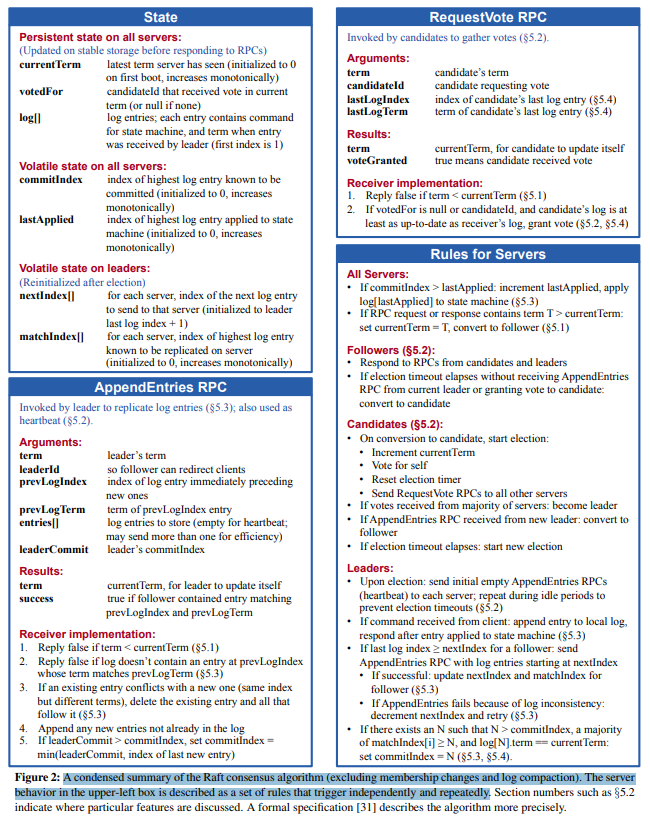Overview
MIT 6.5840, formerly known as 6.824, is a graduate-level course at the Massachusetts Institute of Technology (MIT) that covers distributed systems. The course presents abstractions and implementation techniques for engineering distributed systems, with major topics including fault tolerance, replication, and consistency. The course also includes several programming labs that give students hands-on experience with building distributed systems.
The labs for the course are using GO lang and as follows:
Lab 1 - My Lab Report: MapReduce - In this lab, students implement a MapReduce system, which is a programming model for processing large data sets in parallel.
Lab 2 - 2A: My Lab Report: Raft - In this lab, students implement the Raft consensus algorithm, which is used to ensure that multiple servers in a distributed system agree on the same values.
Lab 3: Key-Value storage based on Raft - In this lab, students build a fault-tolerant key-value storage system using the Raft algorithm implemented in Lab 2.
Lab 4: Sharded Key-Value storage - In this lab, students extend their key-value storage system from Lab 3 to support sharding, which allows the system to scale horizontally by partitioning data across multiple servers.
These labs provide students with practical experience in implementing distributed systems and help them understand the challenges and trade-offs involved in building such systems.
LAB 2: Raft
Raft is a protocol that accept N/2 Failure in each cluster. For example, in a Raft cluster that formed by 7 machine, it could accpet 3 machine dies due to network failure/ some one unplug the power/ windows choose to update suddently/ earthquale or whatever.
This lab are quite strict forward just read the raft paper carefully, and implement it step by step then most likely it will works well.
MIT has seperate the implementation of raft into 4 part,
- LAB 2A: Leader Election
- LAB 2B: Log
- LAB 2C: Persistence
- LAB 2D: Log compaction
Some material that I found useful in understanding Student guide to raft
Instrutors guide to raft
Raft Visualization
Extended Raft Paper (Mostly refer to Figure 2)
LAB 2A: Raft - (Leader Election)
Introduction
It is easier to watch a visalization than typing words.
Thinking Process
Read the academic paper

Handle voting with asynchronous
As first I try to follow my map reduce implementation to implement something like
1
2
3
4
5
6
for i := 0; i < len(rf.peers); i++ {
if rf.me == i {
continue
}
requestvote(i);
}
However, this does not works well as it might take some time to return, and this usually will leader to an election time out in other custer and start another election. Therefore we should start another go routine here to make sure that each request vote will start smoothly even the previous one does not return in time.
1
2
3
4
5
6
7
8
9
for i := 0; i < len(rf.peers); i++ {
if rf.me == i {
continue
}
// Start the anonymous function in a goroutine
go func(counter int) {
requestvote(counter);
}(i)
}
Good use of time package
with go time package, we could trigger a timer for electionTimeOut and heartbeatTImeOut with Timer.Reset()
1
2
3
4
5
6
7
8
9
10
11
12
13
14
15
16
17
18
19
20
21
22
23
24
25
26
27
28
29
30
// Function wrappers to return standard and random time.Duration for heartbeat and election time out respectively
func StandardHeartBeat() time.Duration {
return 150 * time.Millisecond
}
func RamdomizedElection() time.Duration {
return time.Duration(100 + (rand.Int63()%500)) * time.Millisecond
}
// Ticker Function to store action trigger by Time out
func (rf *Raft) ticker() {
for rf.killed() == false {
select {
case <-rf.heartbeatTimeOut.C:
rf.mu.Lock()
if rf.role == Leader {
rf.SendHeartbeat()
//Reset timeout to be trigger next time
rf.heartbeatTimeOut.Reset(StandardHeartBeat())
}
rf.mu.Unlock()
case <-rf.electionTimeOut.C:
rf.mu.Lock()
rf.role = Candidate
rf.StartElection()
rf.mu.Unlock()
}
}
}
Debug with DPrintf in util.go
In util.go, A function is provided
1
2
3
4
5
6
7
8
9
10
11
12
13
package raft
import "log"
// Debugging
const Debug = false
func DPrintf(format string, a ...interface{}) (n int, err error) {
if Debug {
log.Printf(format, a...)
}
return
}
Use the provided function instead of fmt.Printf will be a lot better as changing Debug between true and false could control the output log
warning: term changed even though there were no failures
This warning is triggered by following code segment ub test_test.go
1
2
3
4
5
6
// does the leader+term stay the same if there is no network failure?
time.Sleep(2 * RaftElectionTimeout)
term2 := cfg.checkTerms()
if term1 != term2 {
fmt.Printf("warning: term changed even though there were no failures")
}
Try to track where did you modify the term variable will helps.
Test your Raft implementation multiple times.
As errors can appear randomly. It is not guarantee to reproduce the same error each time. Therefore, I wrote a bash script to test multiple time and save it in to a result.txt
To use this script, you can save it as a file, such as run_command.sh, and make it executable with chmod +x run_command.sh. Then you can run it with your desired command and times, such as:
./run_command.sh 10
This will run the command go test -run 2A -race 10 times and append the output to result.txt. I hope this helps. 😊
#!/bin/bash
# check if the arguments are valid
if [ $# -ne 1 ]; then
echo "Usage: $0 command times"
exit 1
fi
# assign the arguments to variables
times=$1
# loop for the given number of times
for ((i=1; i<=times; i++))
do
# execute the command and append the output to result.txt
go test -run 2A -race >> result.txt
done